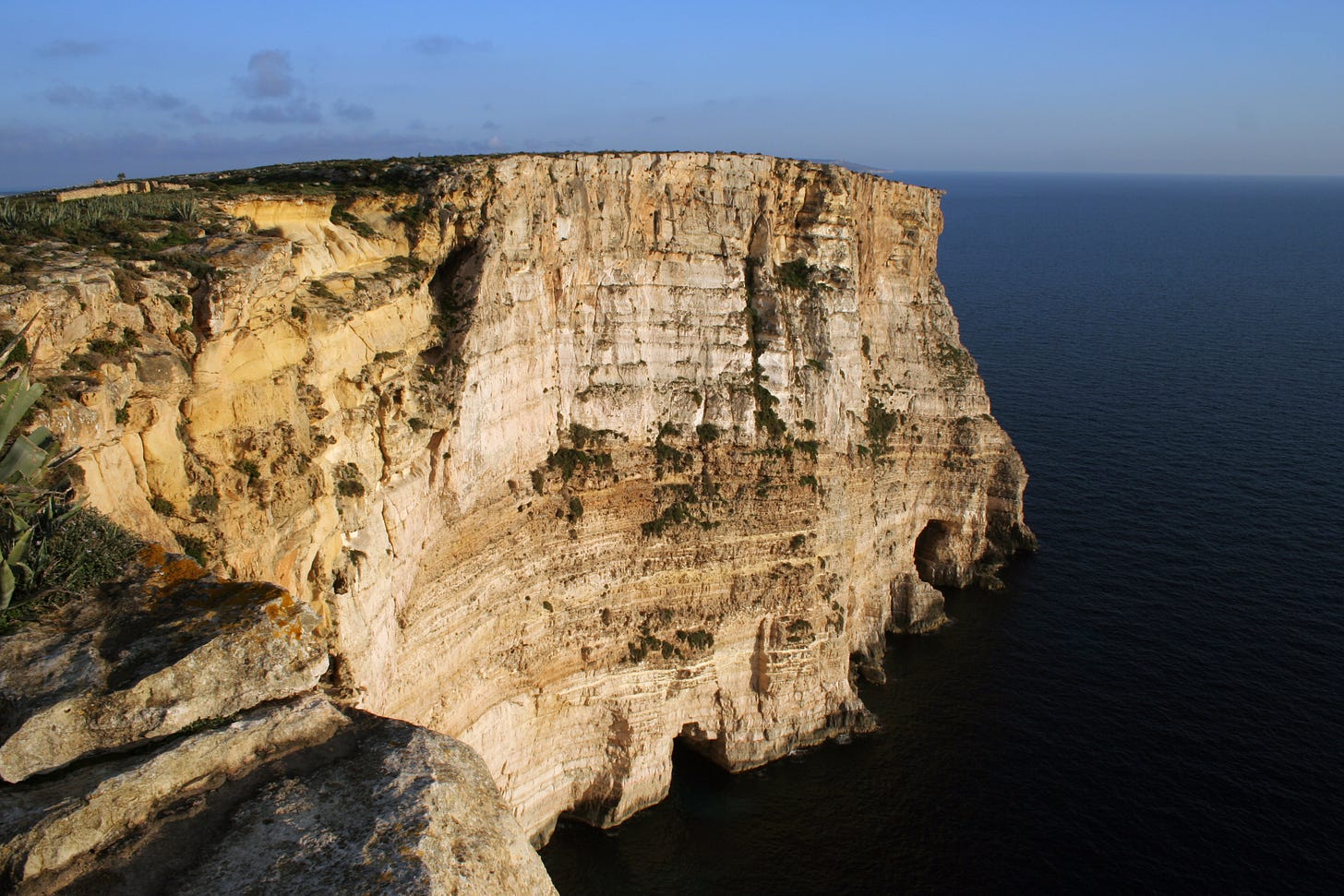#37 Songs in the Key of V, part 3
Part the first of a Malta deep dive
Though it focused on the theme of Pentecost in Pynchon’s novel, part 2 of Songs in the Key of V also saw us dip our toes into the glittering waters of Maltese lore and history. This part 3 is the beginning of a deep dive into that subject, one that’ll eventually span multiple parts. Such is the richness of Malta’s island story. Along the way we’ll consider any links with V. (in both senses) that suggest themselves.
i
Occupying a highly strategic location in the centre of the Mediterranean, the Malta archipelago is poor in natural resources, boasting only ubiquitous limestone rock and a number of natural deepwater harbours. These few facts are the islands’ cardinal realities, the ones that have largely determined their history. Malta was home to Neolithic temple builders, served as a way station for Phoenician traders and a naval base for their compatriots, the Carthaginians. It hosted a recuperating Saint Paul after he was shipwrecked on Maltese rocks in a storm. The islands were an outpost of the medieval Arabs, whose legacy—according to quite recent research—appears to be the native language of the islands, Malti. Malta served as a Christian fortress in the centuries-long struggle with the Ottomans, famously resisting a massive besieging Turkish force in 1565. And, as Pynchon’s debut novel powerfully reminds us, the island country endured massive aerial bombardment in the 1940s, as the Axis powers sought to conquer it to further their aims in the Mediterranean.
As can be inferred from that minimal potted history, limestone has made large-scale construction on the islands possible. There are two types of such rock found on Malta. The first is coralline limestone, which is hard and multicoloured, varying in hue from almost white to grey to red. Globigerina limestone, a soft, yellow variety, is the second type. In both cases, the rock was formed by a process that recalls one of V.'s key themes, the animate transforming into the inanimate. As J Kerry Grant observes, the word “inanimate” occurs almost sixty times in the novel. Profane has a tendency to find the inanimate unsettling—on the night ferry to Norfolk, for instance, and also when he catches Rachel sweet-talking her beloved MG. Pynchon explores his animate / inanimate theme with other characters too. Consider how physically transformed V. is by the time of her incarnation as the Bad Priest—not only has (s)he embraced the inanimate, (s)he counsels the male children of embattled Malta to do so as well:
The boys he told to find strength in - and be like - the rock of their island. He returned, curiously like the Generation of '37, often to the rock: preaching that the object of male existence was to be like a crystal: beautiful and soulless.
V. can be considered an avatar for a world-historical process that is described elsewhere as ”decadence… a falling-away from what is human.” These are the words of the impresario Itague, in chapter 14. He continues:
…the further we fall the less human we become. Because we are less human, we foist off the humanity we have lost on inanimate objects and abstract theories.
As we’ll see, in V. as in other stories and novels, Pynchon appears to be very much preoccupied with a modern civilisation in the grip of decadence and entropy.
Let’s return to the subject of limestone formation on Malta—here we see the once-animate being transformed in a much slower (and less morally fraught) way. Over aons, the deposition and consolidation of coral skeletons produced hard coralline limestone. Malta’s softer limestone takes its name from Globigerina, a genus of small mollusks. The remains of their calcareous shells, along with the skeletons of some vertebrates, formed this rock.
Geologically speaking, the islands of Malta can be pictured as a layer cake. The hard top and bottom layers are coralline limestone. They surround a soft middle layer—a filling—of globigerina.



